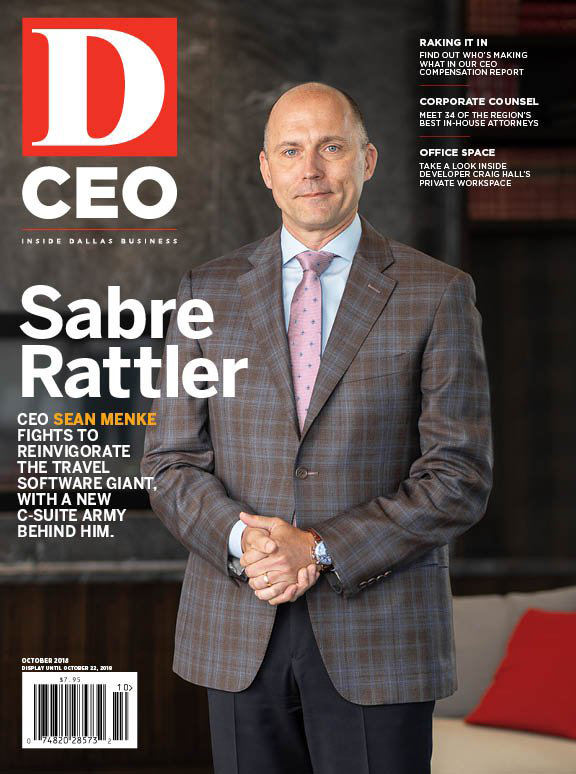It was a big moment for Randall Stephenson. The AT&T CEO had spent 600 days waiting for a ruling on one of the biggest deals in recent history. An $85.4 billion merger with Time Warner was on the line, and Stephenson had gone all in. When a federal judge approved the blockbuster deal on June 12, AT&T could finally begin implementing its massive plans to reorganize and launch new business lines.
“When the court ruled, it was relief,” Stephenson said during an interview on CNBC’s Squawk Box three days after the judgment. “My reflection, in hindsight, is we live in an amazing country. We got our day in court, and the system worked.”
The decision marked another big step in AT&T’s evolution. From the creation of the telephone in 1876 to providing the first broadband transmission medium in 1941 to introducing the first commercial cellular telephone system in the U.S. in 1983, AT&T’s history is rooted in innovation and reinvention. Its latest takes things a step further, by positioning the company as a catalyst in defining an entire industry. This begs the question: What exactly is a telecommunications provider, and will pure telecommunications providers even exist in the near future?
Ever since it scooped up DirecTV and began the process of buying Time Warner, AT&T has been backing off on using the word “telecommunications” in company verbiage. “The deal we have been working toward and have been wanting to build—we’re calling it a ‘modern media company,’” Stephenson said at a Wells Fargo Conference in June. “This is something we’ve been trying to do for quite some period of time.”
And that means having the technology, network, capabilities, and the content to distribute across millions of consumer screens. With AT&T entering a new realm of services and offerings, it also takes on new competitors and competes in multiple industries.
“These types of convergences have been significant and, over time, they reshape the boundaries of these industries,” says Amit Basu, chair of the Information Technology and Operations Management at Southern Methodist University’s Cox School of Business. “What companies like AT&T are trying to do is say … they play an essential role in infrastructure, but they don’t want to remain solely infrastructure providers.”
The Transformation
For the last several years, AT&T has been snapping up smaller value-adds and big corporate heavyweights to piece together an operation that could take on the likes of Amazon, Facebook, and Google—all of which now compete in media. And although AT&T’s latest move has caught the attention of the business world, with help from a highly publicized Department of Justice lawsuit that has aimed to block the Time Warner merger, the evolution of the telecommunications industry began decades earlier.
“As far as pure telcos, meaning phone companies, that shifted a long time ago,” says Frank Louthan, an analyst at Raymond James. “Telecos adopted voice and enterprise, slowly getting into wireless. The phone companies have gotten into the video and data business. … There isn’t a straight wireline company left anymore. They’re communications services companies.”
AT&T is pushing the innovation needle for telecommunications, but it’s still challenged to keep up with more progressive technology companies that are disrupting industries across the gamut.
“If you look at them in isolation, they are being aggressive,” says Monica Zlotogorski, telecommunications researcher for Gartner. “But if you look at the bigger picture, they’re basically reacting to forces that are already there.”
AT&T’s first major move into media was when it acquired television provider DirecTV for $48.5 billion in July 2015. It went on to bundle television and wireless packages for consumers and allow AT&T customers to stream DirecTV content via TV Everywhere and a product called DirecTV Now. After acquiring Time Warner, AT&T bought AppNexus, a global advertising marketplace, gained full control of advertising and content company Otter Media, and launched Watch TV, a streaming package that bundles Time Warner programming. (Separate from its media buys, AT&T also announced plans to purchase cybersecurity company AlienVault in August.)
With its eyes on 5G, which is expected to open up all sorts of new streaming capabilities, AT&T is setting itself up to be a dominant media player. “As we move into a world of 5G, it’s going to change the customer experience like nothing we’ve seen,” Stephenson said at the Wells Fargo conference. “We think 4G was radical, and it was. 4G has what enabled us to begin to watch video on these mobile devices, and it what’s begun to push video consumption into the world of mobility. 5G takes us to a whole different place. And this is going to be truly no latency, on-demand video, virtual reality, autonomous.”
AT&T’s offerings will have plenty of competition, but as a telecommunications provider, the move should accelerate growth.
“You’re seeing a lot of competition for people’s time—a lot goes to Google, Facebook, and online,” Louthan says. “AT&T is tying to utilize its network to provide content in ways customers want, monetize that content, and overall improve their business by effectively lowering churn. … If they can lower churn by 10 basis points, that can add 1.5 percent a year to earnings. In a relatively low-growth industry [like telecommunications], that’s a pretty big move.”
Other telecommunications companies are looking at new ways to leverage their networks, too. For example, Verizon purchased AOL in 2015 and Yahoo last year. But AT&T, in a lot of ways, is setting the pace, providing flexibility in entertainment options, breaking traditional linear TV offerings, and combining network and entertainment packages that give consumers another reason to choose AT&T. All of that heats up competition.
“I would not be surprised at all to see similar moves by at least some of its competitors,” Basu says of AT&T. “I would imagine that Verizon, by the way they have already broadened their scope with Yahoo, is looking at their options.” Other companies, like T-Mobile and Sprint, likely will follow suit, says Basu, “because they are not in as strong of a position. At some point, they will have to broaden.”
The Disruption Game
Big mergers bring with them major challenges. In this case, AT&T will be tasked with trying to operate as a nimble entity that can innovate quickly while combining two huge organizations. That could include things like remaining a fair provider of content created by others, even though it may have a leg up now owning providers like HBO, Turner Broadcasting, and Warner Bros., under the Time Warner brand. If it leverages its own content to achieve what could be seen as an unfair advantage, other content providers could choose to withhold their programming from AT&T, Basu says.
When Squawk Box host Joe Kernan spoke with Stephenson days after the Time Warner deal was sealed—mind you, the DOJ filed for an appeal shortly thereafter—he challenged AT&T’s CEO to respond to the idea that the company’s big move was just in response to keeping up with Amazon or Google.
Stephenson pointed out that both companies live and die by generating engagement: “What I found most interesting is when they say we need more engagement … where do they go? They go to premium video. … We want to participate.”
As it continues its evolution, AT&T’s efforts to redefine itself may result in an undefinable company. “The future of businesses is not that industries are disappearing,” Zlotogorski of Gartner says. “Some will remain, some will emerge. … The question is: What is it that businesses and customers actually need, and what assets do you have to serve that? If you think about the disruptors right now, how do you define Facebook, for example? What industry is it in? The disruptors are not thinking about that.”
AT&T may not be considered a disruptor just yet, but it sure is making the telecommunications industry much more interesting to watch.
Danielle Abril is a business and technology writer in Dallas.






